Table of Contents
Drinking Water and Biostratigraphy (Aquifers) - an example from Denmark
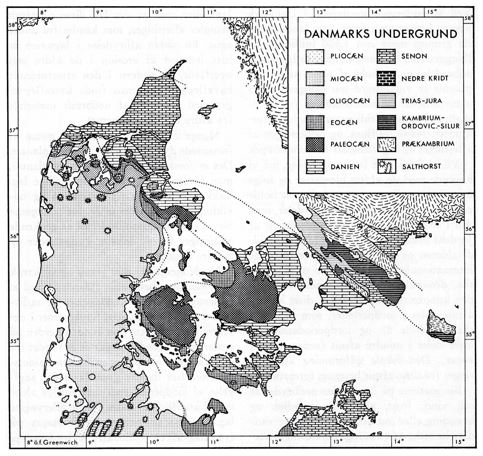 Miocene fluvio-deltaic sands in Jylland, Denmark (see map left, Rasmussen, 1961 & Weinberg-Rasmussen, 1966) are important drinking water reservoirs (aquifers). The water from the subsurface is oxidized to remove manganese and iron and filtered.
Miocene fluvio-deltaic sands in Jylland, Denmark (see map left, Rasmussen, 1961 & Weinberg-Rasmussen, 1966) are important drinking water reservoirs (aquifers). The water from the subsurface is oxidized to remove manganese and iron and filtered.
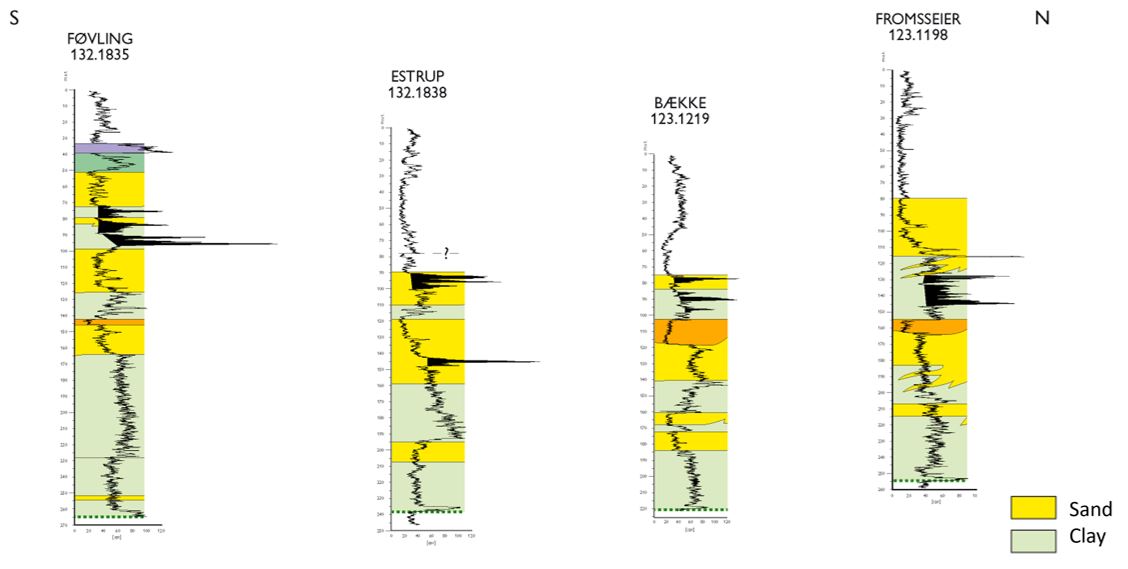 Ideally, a good reservoir should be coarse grained with high permeability, thick (ca. 30-40 m) and laterally continuous. Fluvial sands and gravels and delta sands are equally good reservoirs. Originally, correlation of these fluvial and shallow marine sand layers relied on log stratigraphy, e.g. heavy mineral gamma log ‘spikes’ but this proved complicated (see fig above).
Ideally, a good reservoir should be coarse grained with high permeability, thick (ca. 30-40 m) and laterally continuous. Fluvial sands and gravels and delta sands are equally good reservoirs. Originally, correlation of these fluvial and shallow marine sand layers relied on log stratigraphy, e.g. heavy mineral gamma log ‘spikes’ but this proved complicated (see fig above).
Between 1999 and 2015, an extensive palynological study was carried out on many outcrop sections and boreholes in Jylland. Based on the resulting huge database, a new, detailed dinocyst zonation for the Neogene of onshore Denmark was constructed (Dybkjær & Piasecki 2010). See figs below for the dinocyst zonation and representative Miocene palynomorphs.
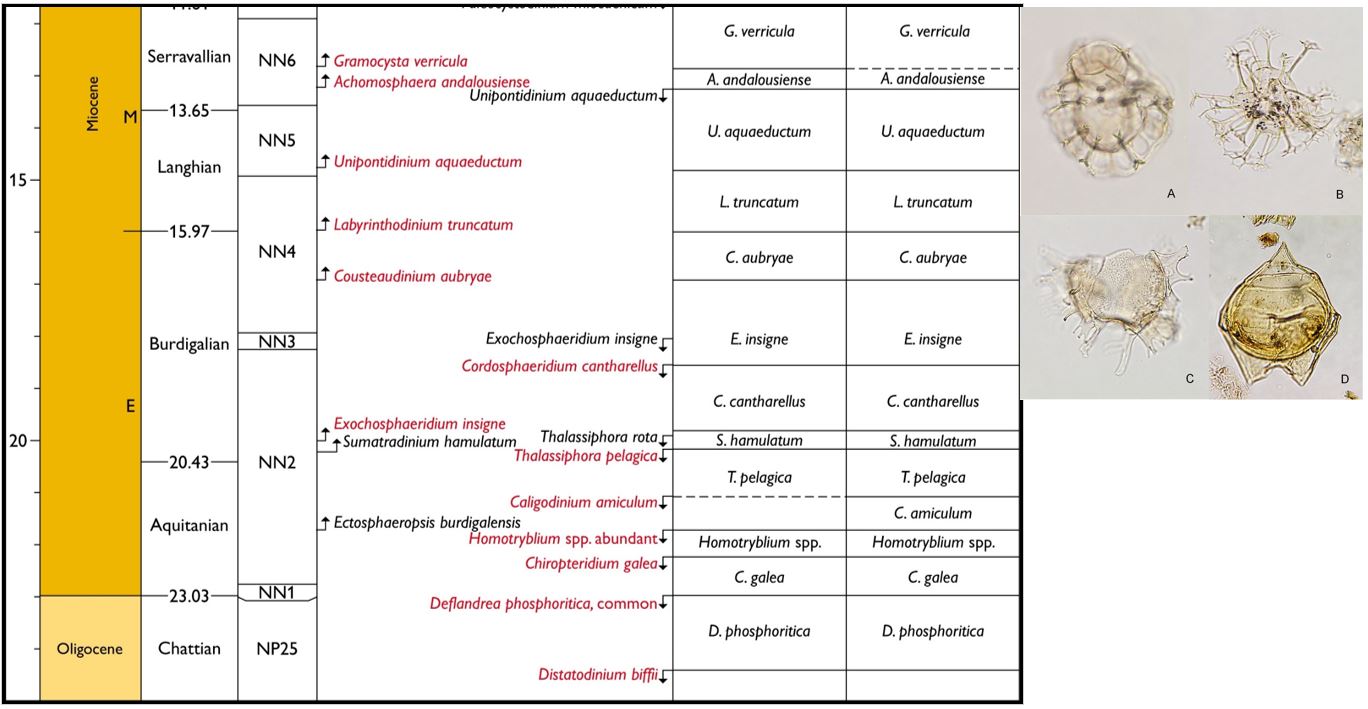

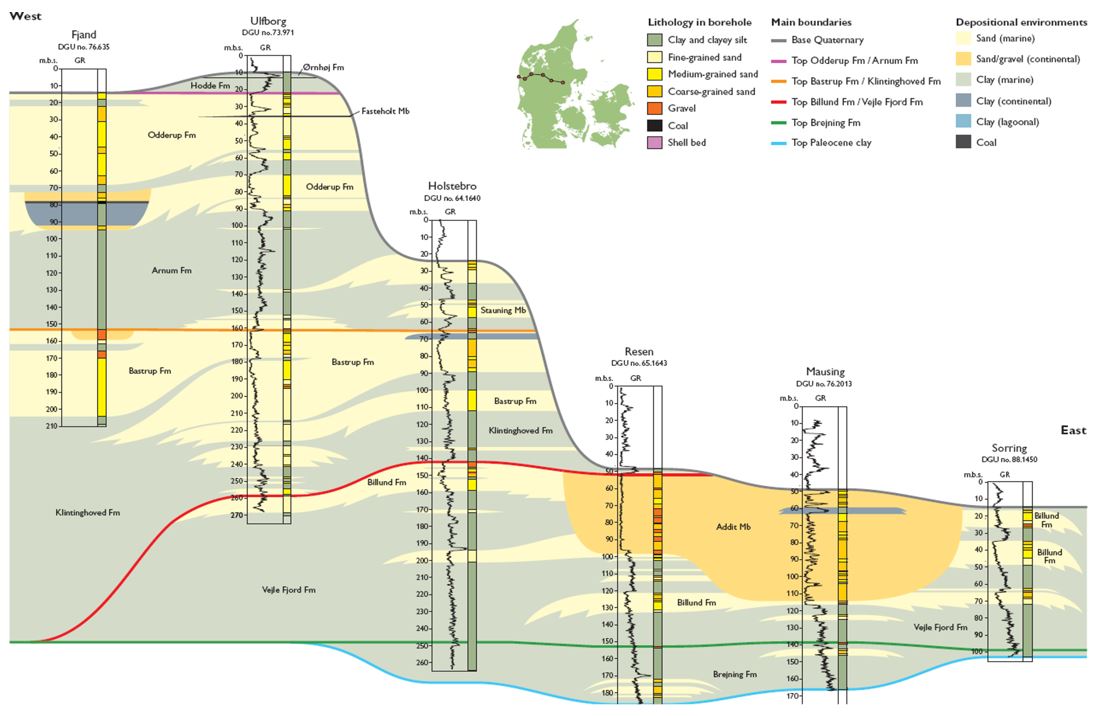 Application of the new dinocyst zonation to the boreholes in combination with sequence stratigraphy revealed that earlier well-to-well correlation had to be altered significantly (see figs above) and a new, detailed geological model and new lithostratigraphy for the Lower to Middle Miocene succession in Jylland were developed (see fig below, Rasmussen et al. 2010).
Application of the new dinocyst zonation to the boreholes in combination with sequence stratigraphy revealed that earlier well-to-well correlation had to be altered significantly (see figs above) and a new, detailed geological model and new lithostratigraphy for the Lower to Middle Miocene succession in Jylland were developed (see fig below, Rasmussen et al. 2010).
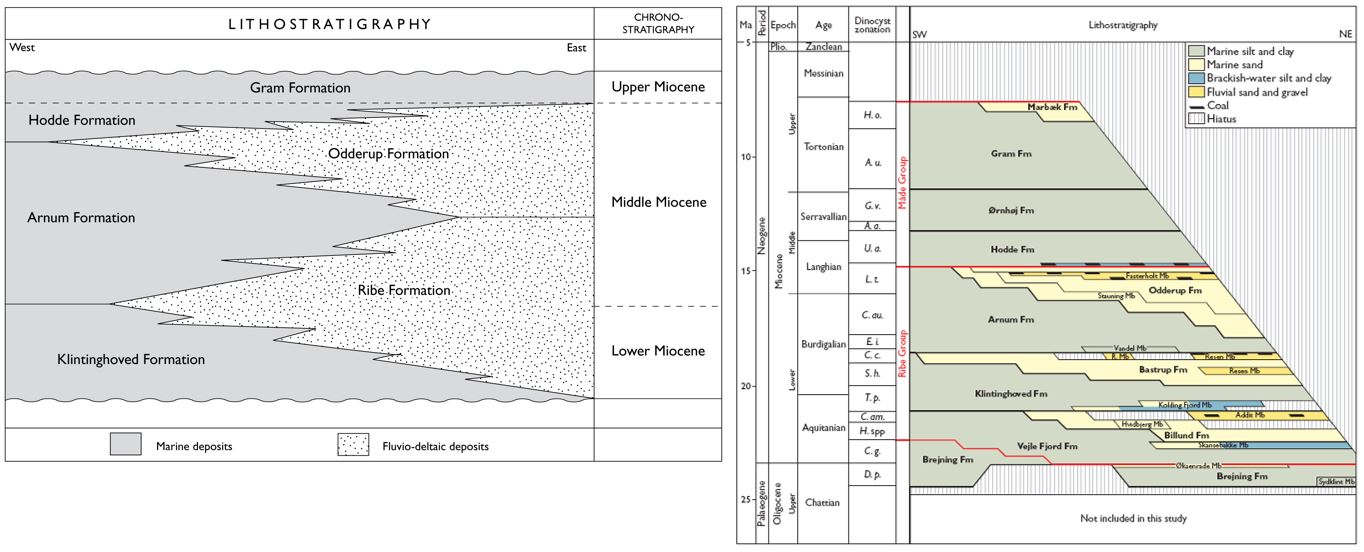
This allows the main drinking water aquifers, the Billund, Bastrup and Odderup Formation sand systems to be accurately correlated. See photo below for the fluvio-deltaic deposits of the Addit Member of the Billund Formation.

The new geological model also allows correlation of the Billund and Bastrup Formations on seismic sections (see fig below).
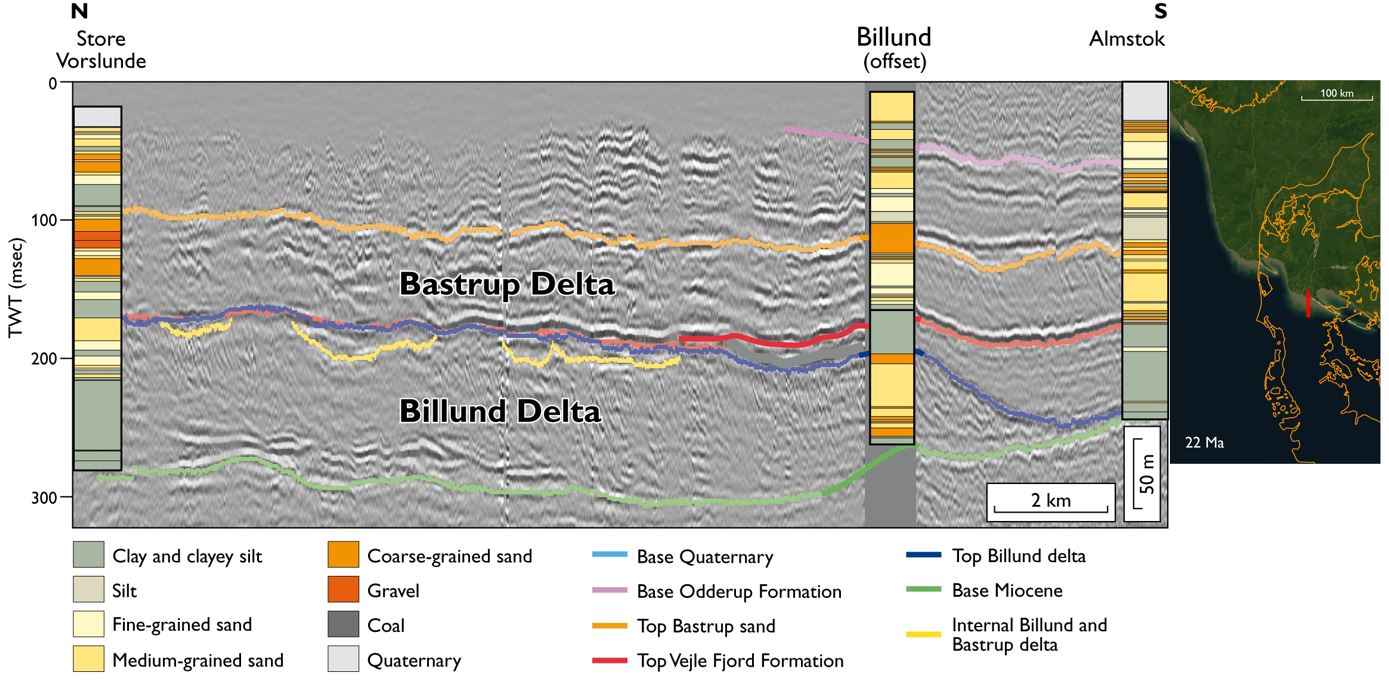
The new dinocyst zonation, the updated geological model and lithostratigraphy for the Miocene of onshore Denmark:
- have improved the existing stratigraphic framework
- have resulted in the recognition of three fluvio-deltaic sand systems instead of the original two
- are used by local authorities when drilling for water and for areal planning
- facilitate mapping the extent of known aquifers and clarification of their mutual relationships
- allow that aquifers are protected from pollution due to leaching from the surface